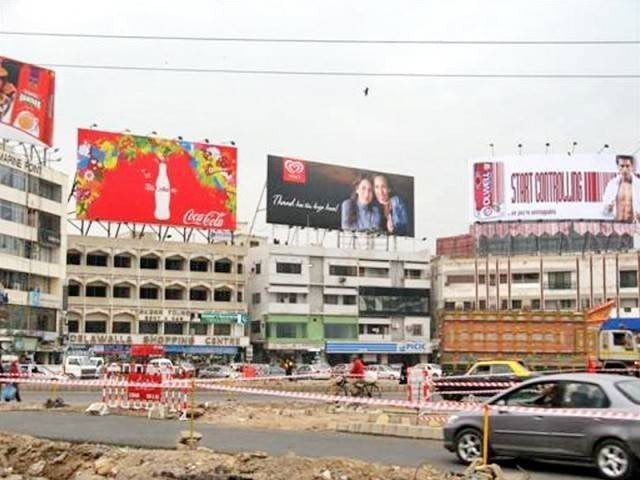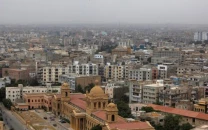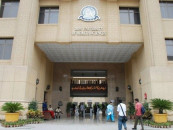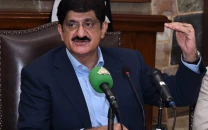Advertisements find their way back onto Karachi's thoroughfares
DMCs, cantonment boards have been issuing no-objection certificates for construction of walls

After the ban on regular billboards, advertisers had to find other means of advertising. PHOTO: FILE
It is, however, still not known where the revenue collected from the wall advertisements is going.
District municipal corporations (DMCs) and cantonment boards in the city have begun to grant no-objection certificates for placing signboards, which obscure drivers' vision and result in traffic nuisances. According to sources, DMCs are granting auction permissions on important thoroughfares such as Sharae Faisal, II Chundrigar Road, University Road and Shershah Suri Road. On several points along these roads, DMC officials are putting up advertisements of their own companies.
All the local bodies, including the cantonment boards, are rapidly constructing permanent walls on important thoroughfares, which will be used for advertising purposes. The Karachi Cantonment Board has not even spared the boundary walls of Gora Qabristan. Its walls are being used as a source of revenue generation, with advertisements plastered across them.
Govt halts KMC’s announcement of vacancies
The Karachi Cantonment Board has even constructed walls alongside the Sharae Quaideen Flyover, which falls within the jurisdiction of the Karachi Metropolitan Corporation (KMC). The mayor had announced that he would send a legal notice, but no progress has been made.
Civil society is terming the construction of the walls along main thoroughfares 'very dangerous'. Local and international companies annually generate Rs3 billion from advertisements, of which Rs1 billion goes to the KMC in the form of taxes. However, according to the Sindh Local Government Act, 2013, this revenue will now be transferred from the KMC to the DMCs, which has deprived the former of a massive sum.


















COMMENTS
Comments are moderated and generally will be posted if they are on-topic and not abusive.
For more information, please see our Comments FAQ